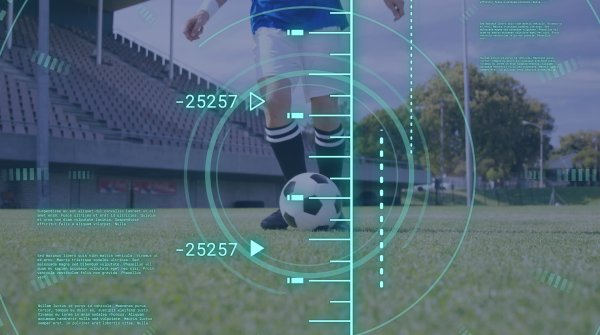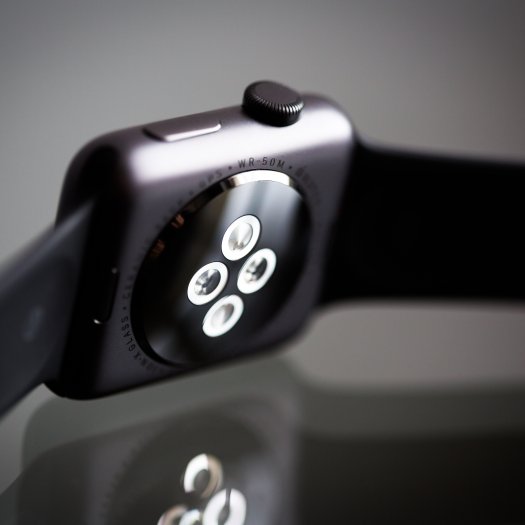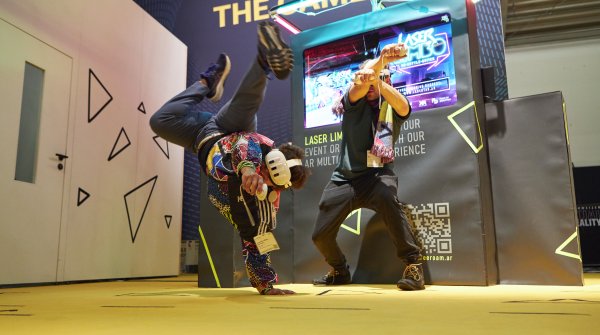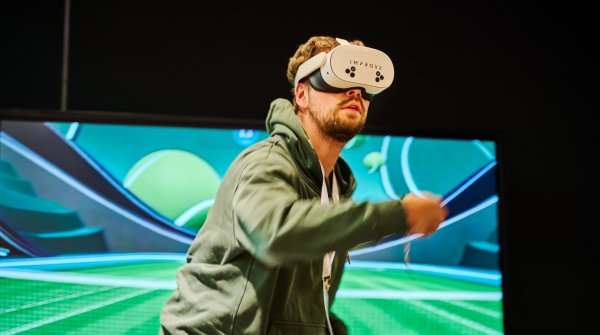Wearables include all "smart" devices, such as fitness watches, smartwatches, but also chest straps or smart clothing, headphones or data glasses. Wearables are designed to support you in your everyday life and can optimize your training by allowing you to access values such as heart rate, daily steps, and sleep quality, for example, and gain valuable insights from this data. Because health is not just a trend, but an important part of any training plan, and with the help of wearables you can always keep an eye on it and respond better to your body and its needs.
A pair of pants as a yoga coach? The company Wearable X has actually formulated this goal. Whether this will become reality at some point remains to be seen. But the Nadi X yoga pants are an exciting experiment. The company has integrated sensors into the leggings. These are supposed to detect incorrect postures during yoga and alert the yogi to them via vibrations. So if you're holding yourself more like a dead fish during cat-cow, you'll be gently shaken until everything is in the right place. The pants are to cost around 280 US dollars.
"Take a deep breath!" Conscious breathing can calm, lower heart rate faster and reduce stress. Oxalife aims to harness the power of proper breathing. Before an important meeting, as an energy booster in the afternoon, or after exercise, users should use Oxalife to benefit from improved breathing. The technology is sophisticated: The breathable wearable provides biometric information. It monitors and evaluates breathing speed, does heart rate tracking, and can also monitor sleep. Based on this, Oxa suggests exercises for you in everyday life to adapt and improve your breathing technique to the respective situation. The numbers show that it works: In one study, as many as 100 percent (!) of the device's testers felt more relaxed after doing breathing exercises. And if you don't want to be demonstrated a special breathing technique, Oxalife launches soundscapes that align your heart and breathing rates and calm you down. A special shirt plus the smart sensor cost - deep breath - 399 euros!
This wearable is the simplification of fitness trackers: While other devices have been expanded into a veritable infotainment center, the Whoop 4.0 is limited to the essentials: Training and regeneration. Available in many variants, the Whoop with its mini sensor promises a great deal of precision when it comes to measuring blood oxygen, skin temperature or heart rate, thus monitoring not only training success but also the quality of the body's recovery after a strenuous workout. A special feature is that, in addition to being worn on the wrist, the Whoop 4.0 can also be integrated into sportswear that matches it. There is a dedicated workout collection of sports bra, leggings, shirts, shorts and underwear. The Whoop can also be easily attached to the upper body or calf. The device is not available for direct purchase, however - it is tied to a monthly membership of 30 euros. Extras such as wristbands or special sportswear have to be purchased separately.
A fitness tracker that watches over you 24/7, that you never forget or lose because it's a tattoo on your skin - what an ingenious idea! A team at the University of San Diego in California experimented with this very special wearable a few years ago. The idea was to warn users when their bodies were low on fluids, needed more electrolytes or were in danger of overheating. However, the idea has not yet made it to stores. Instead, the scientists continued their intensive research on a health wearable: the disposable tattoo was intended to make it easier for diabetes patients to measure their glucose levels. Clinical trials have also been carried out, but the product has yet to be launched on the market.
Admittedly, this high-tech sock sounds like every runner's dream: a sock that helps you improve your pace, optimize foot roll and compare your running shoes. Sensoria socks promise all of that. This is made possible by all kinds of sensors and cables woven into the sock. An app reads the data and provides the runner with important results for optimizing his run. However, the high-tech sock costs a whopping $400 - at least the replacement pair will be much cheaper.
Will this wearable make the manufacturers of conventional fitness trackers foam at the mouth in anger? The ORB Smartguard, which is worn like a conventional mouthguard, promises very precise key data on health and fitness. Because of its proximity to the carotid artery, the device's makers believe the mouth is optimal for tracking heart rate and other metrics. The device also picks up vibrations, which can help register head impacts, for example. This means that concussions can be detected more quickly - especially in sports that affect the head, such as football or rugby, this smart mouthguard is a big issue.
Who doesn't know the situation: Can I still load up the 10 kilo disc or would I rather just go up 5 kilos? The wearables from Eigen Fitness Nodes are designed to provide a precise answer to this decision, which can often only be answered by instinct in the gym. The sensors mounted on the upper arm, forearm, thigh and lower leg measure acceleration and speed when lifting weights, among other things. For example, athletes with too much weight on the dumbbell take a lot of momentum - the wearable notices this and advises them to lift a few kilos less. This AI-powered wearable is not yet on the market. However, the Canadian manufacturer plans to deliver it by next year at the latest.
 SportsTechUnlocking the Future of Sports with AI
SportsTechUnlocking the Future of Sports with AI
- ISPO awards
- Mountain sports
- Bike
- Design
- Retail
- Fitness
- Health
- ISPO Job Market
- ISPO Munich
- ISPO Shanghai
- Running
- Brands
- Sustainability
- Olympia
- OutDoor
- Promotion
- Sports Business
- ISPO Textrends
- Triathlon
- Water sports
- Winter sports
- eSports
- SportsTech
- OutDoor by ISPO
- Heroes
- Transformation
- Sport Fashion
- Urban Culture
- Challenges of a CEO
- Trade fairs
- Sports
- Find the Balance
- Product reviews
- Newsletter Exclusive Area
- Magazine





